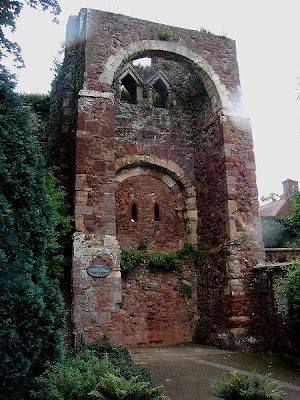
Thursday afternoon saw me put in the garden again during the odd sunny spell. A Comma came to visit. It gets its name from the comma-shaped marking on the underwing.


Then, as if to frustrate me for the last time, a hoverfly that I could not identify came along....

And that is the end of my Exeter trip for 2008. My thanks to all concerned for a wonderful holiday. I cannot wait to see what changes have been wrought at Frog End when I return next year – the Gods willing.














































